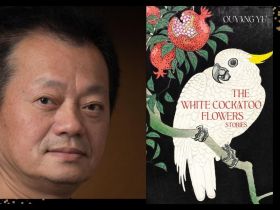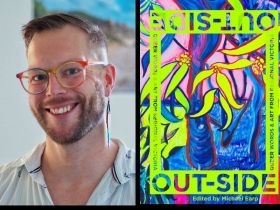On 25 August 1959, Afghan Prime Minister Mohammed Daoud Khan attended celebrations in the Ghazi stadium in Kabul to commemorate the anniversary of the country gaining independence from Britain in 1919. He was accompanied by his wife, Princess Zainab, and a group of 30 other women. In a carefully considered departure from the purdah still prevailing in the country, these women wore western dress with headscarves but no veil. This is the first afternoon referred to in Tim Bonyhady’s title and was an orchestrated part of Prime Minister Daoud’s efforts to liberate Afghanistan’s women, including from the chadari, a veiled garment similar to the burqa. The second afternoon of the title occurred 40 years later when a woman named Zarmeena was executed by the Taliban in the same stadium. When she was shot, Zarmeena was wearing a chadari.
Bonyhady’s alliterative subtitle ‘a history of Afghanistan through clothes, carpets and the camera’, somewhat understates the book’s scope. Bonyhady is interested in the visual in general, whether it be photography, film, rugs, painting or public spectacles of political power. The book focuses on images of Afghanistan from the period between the two afternoons in the Ghazi stadium, although it does also pay attention to earlier attempts to modernise Afghan dress under King Amanullah, led in part by his glamorous wife (Bonyhady identifies her as a “flapper Queen”) in the late 1920s and briefly focuses upon life under the government of Hamid Karzai, who was installed as President following the US invasion in 2001.
Read: Dance review: Weredingo, Brisbane Festival
‘Images are vital,’ Bonyhady writes in the introduction, and his book demonstrates that they are particularly vital to an understanding of Afghanistan, where clothing and art are indelibly political. Most potently, restrictions on women’s dress have been both a symbol and instrument of the subjugation of women. I was surprised to learn that when the Taliban came to power in the 1990s, it was not just women’s dress they policed. Men and boys were required to wear unfastened turbans, grow a beard at least a fist in length, keep their fringe short so their foreheads would make contact with prayer mats and shave their armpits and pubic hair. Of course, the policing of women was far more severe; not content with ensuring they were covered, the Taliban wanted them to play no part in public life or even leave the house unaccompanied. Heart-breaking graffiti on the mosque in Herat read, ‘we girls want to go back to school.’
The history of Afghanistan in the 20th-century is perhaps too complex to be dealt with compendiously in any single book but the decision to focus on the visual gives Bonyhady a vantage point from which to draw fascinating insights. It is clear that his particular passion is for war rugs, in which traditional Afghan weaving patterns are updated to include war imagery such as tanks and Kalashnikovs. Bonyhady’s attention is by no means limited to war rugs, however. This is an impressive work of scholarship; he seems to know everything about the visual history of Afghanistan. Readers will likely be tempted to Google many of the photographs and images he describes (and will be aided by his comprehensive notes). If anything about the book disappoints, it is that the images reproduced in the illustrations are, by necessity, only a tiny subset of those Bonyhady discusses – maybe there is room for a lavishly illustrated edition in the future.
Perhaps the greatest strength of the book is that the focus on images necessarily demands attention be paid to the lives of ordinary Afghans; be they those wearing chadaris, those depicted in photographs or the artists weaving images of tanks into rugs. So much geopolitics has played out in the last century in Afghanistan, not least the Soviet and American invasions, that the lives of everyday Afghans are often paid insufficient attention. It is impossible to read this book without being constantly reminded that, despite so much suffering having already taken place, yet more suffering is taking place right now. It is tragic to think that the horrors Bonyhady describes may be relived, yet again. Clothing seems destined to be another flashpoint and photography and art once again vital political tools. Bonyhady records one weaver of war rugs as saying that he wanted ‘to show how we Afghans had to suffer’.
Two Afternoons in the Kabul Stadium by Tim Bonyhady
Publisher: Text Publishing
ISBN: 9781922330758
Format: Paperback
Pages: 352 pp
Publication Date: 3 August 2021
RRP: $34.99





